Your cart is currently empty!
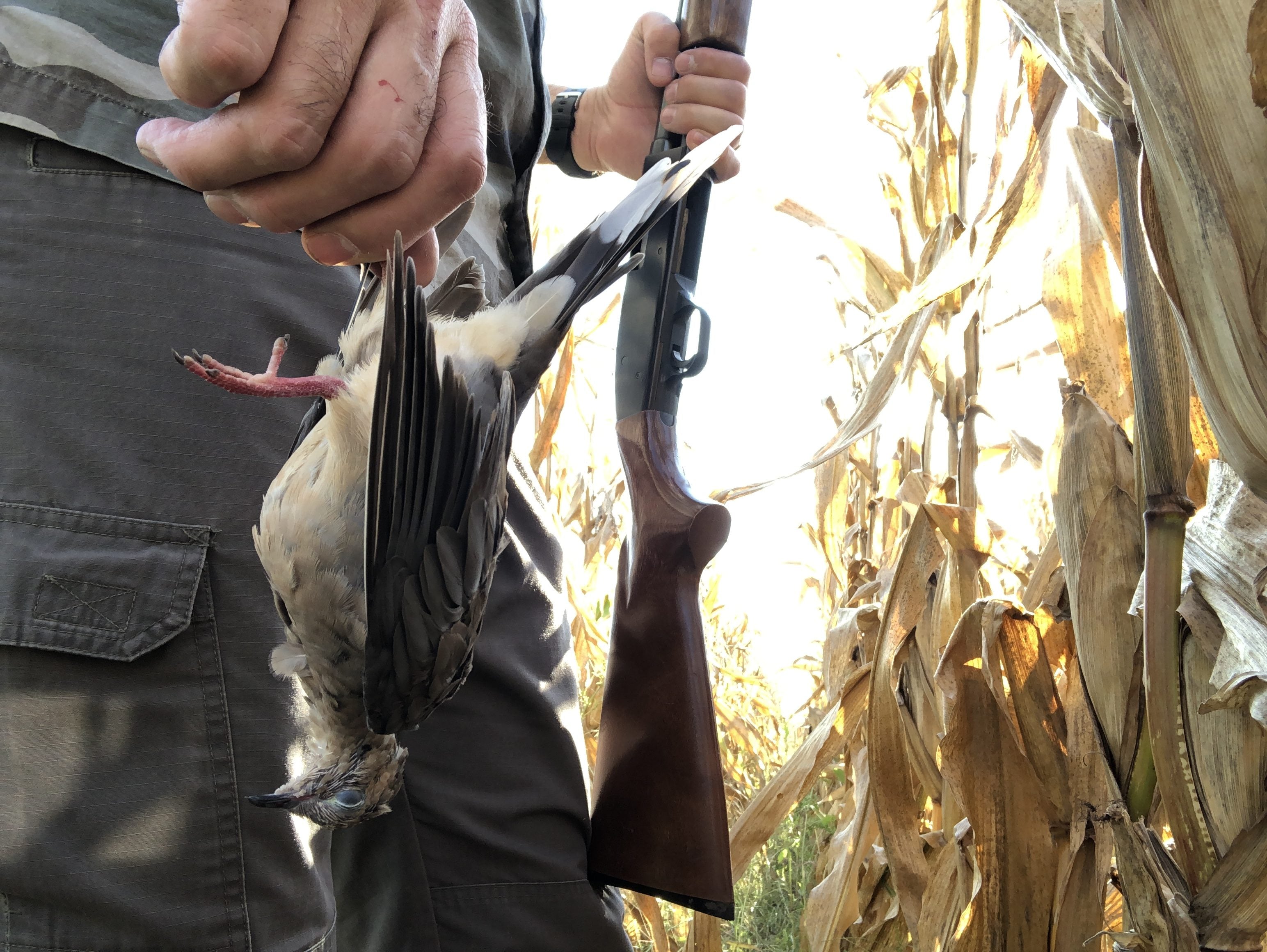
How To Field Dress Doves

Dove hunts takes place during the hottest days of September, so proper field care is essential.
It’s that time of year when we find ourselves gathered with friends and strangers positioned around a field waiting for those September gray birds to come screaming in. A barrage of gunfire erupts, piercing the air. One can feel the excitement, the heat of expended shotshells, and the sweat running down our necks as sun rays pour from the blue sky upon us dove hunters. Dogs are panting (both hunters and dogs need to stay hydrated) as they await anxiously for doves to be interrupted in mid flight with shot. Dove hunting takes place during the hottest days of the hunting season, so proper field care is essential in order to keep those doves fresh, tasty, and ready for the grill.
Some hunters choose to clean doves out in the field as it is easier. There are benefits to this as it avoids the mess of feathers all over the bed of the truck, garage, or kitchen. Once the action starts and doves begin to fall from the sky, the birds require proper field care. Every dove hunter knows the utility of a bucket or chair in the field. Besides comfort, they provide storage for gear, ammo, and yes…birds. Those sit-on-top swivel buckets that are insulated come with built in storage compartments which are excellent to place doves in to keep cool and fresh. Some field chairs also have functioning storage areas to keep birds in.
September can be HOT and the dove action even hotter. Piling doves into a vest when the temperature is above 80 degrees or more doesn’t allow the birds to cool properly, especially if hours are spent trying for a limit of fifteen doves. However, there is an alternative method to keep doves cool. Doves can be hung using a handy game bird strap or carrier. Straps come in various sizes to accommodate different size birds and are made of a variety material. The concept of the game bird carrier is to place individual doves through loops either by the neck or feet. Most straps come with a belt loop that can be snapped on and off easily. Carriers usually come with two removable clips or straps that can hold up to 8 doves each. Placing doves utilizing game carriers allows the birds to cool in the open air. They can be worn from the belt or hung in a nearby tree or fence. However, the easiest way is to bring a cooler and get those birds on ice as soon as possible. One way to do this is by gutting the doves using a sharp knife while still in the field or the very least immediately after the hunt. Once the entrails are removed, there’s little risk of spoilage if the birds can be cooled.
Now let’s get into the nitty gritty of proper field care for doves! Remember, everyone prepares doves differently. Some dove hunters like to skin, pluck, or breast their birds. Here we are going to provide on how-to breast doves out. This is more due to personal preference. No matter how doves are prepared, they are among the tastiest of upland birds, so recipes won’t be too hard to find to satisfy the palette.
STEPS
1. Start with the dove lying breast up
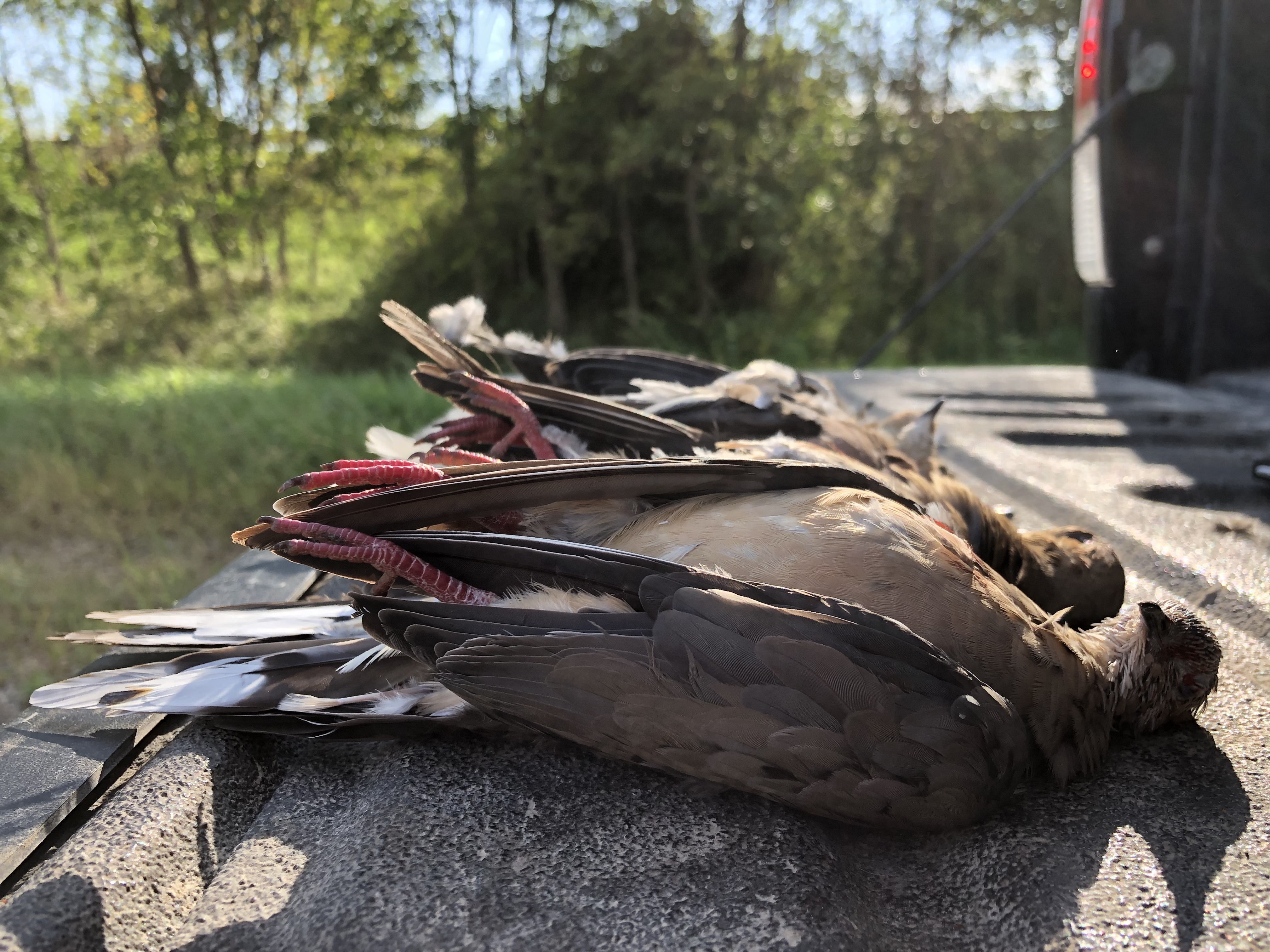
2. Pluck only the breast feathers. Gently peel the skin from the breast.
3. Take your finger and pull the breast upwards. This will pop it from the body and allow it to lift free.
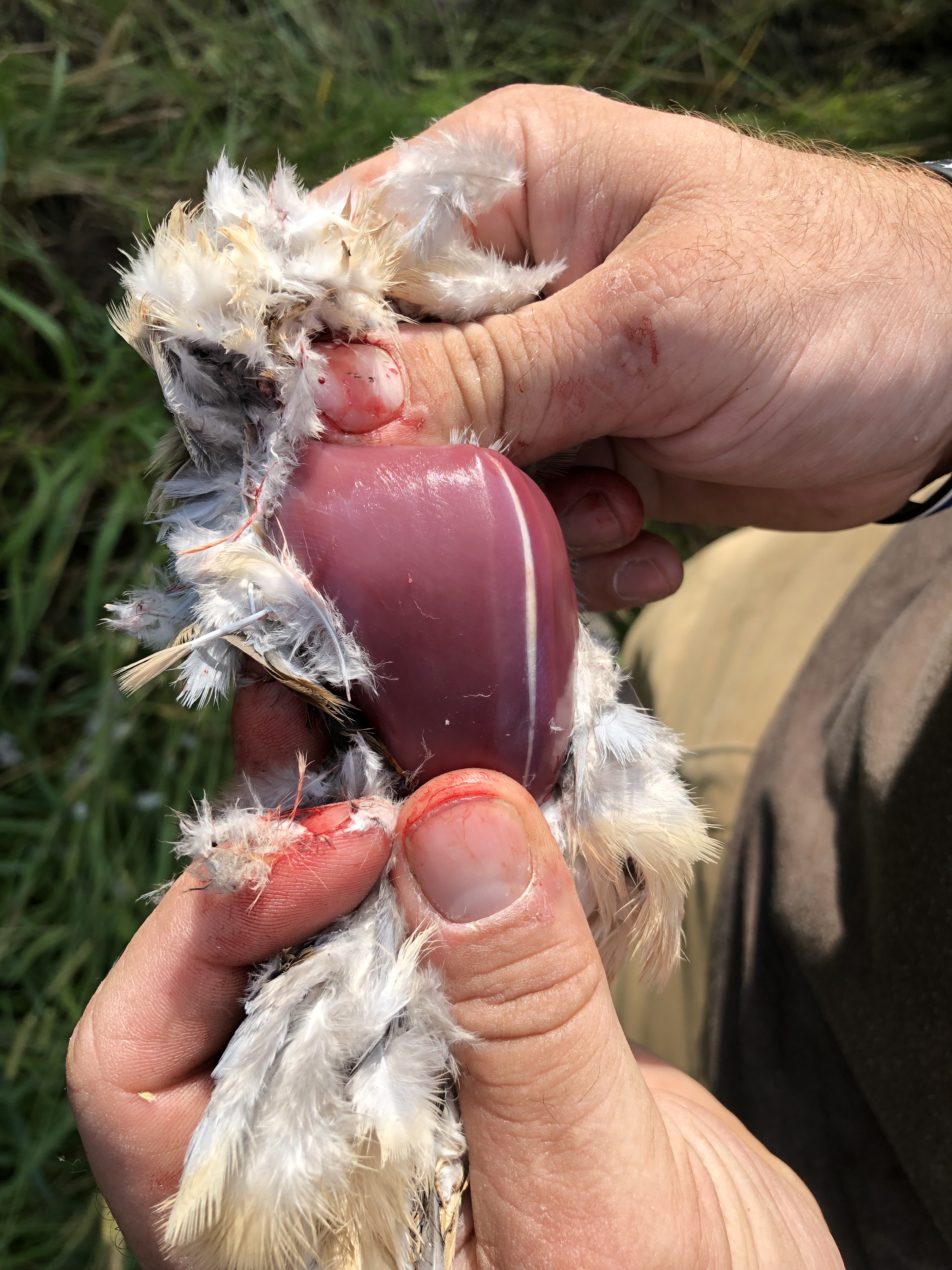
4. Using a pair of sharp game shears, scissors, or thin-bladed knife, cut the breast from one of the wings. This will leave you with a separated breast with a wing attached and a carcass to discard. Federal law requires hunters to transport migratory birds with one fully feathered wing left attached to the carcass for identification purposes.
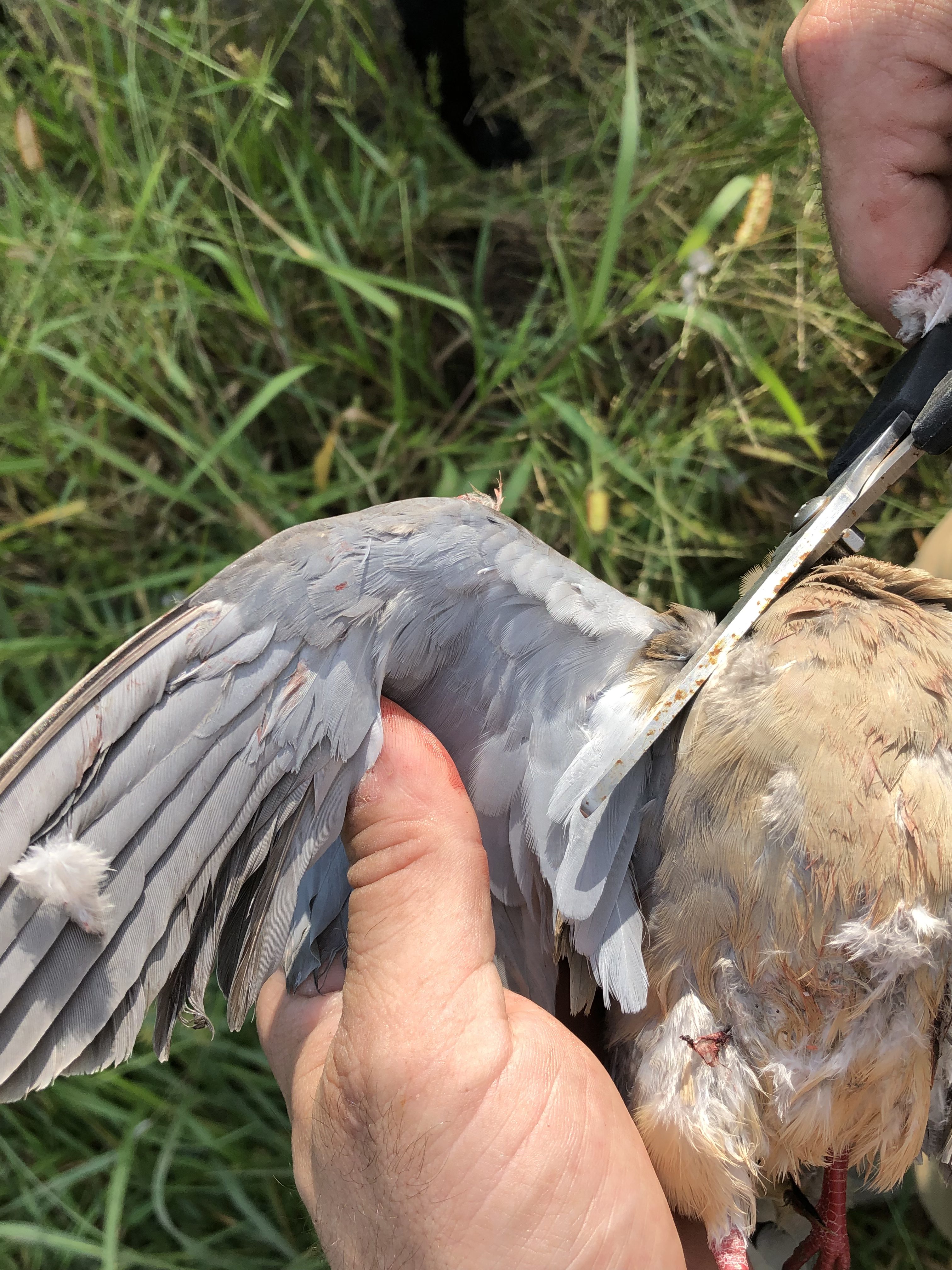
5. Once the doves are breasted out, lightly rinse to remove loose feathers.
6. Use Ziploc plastic bags or vacuum pouch to store doves. Use plastic bags that come with write-on labels to document date, location, and species taken.
7. Do not overfill bags. Make sure to get a good seal in-order to prevent freezer burn.
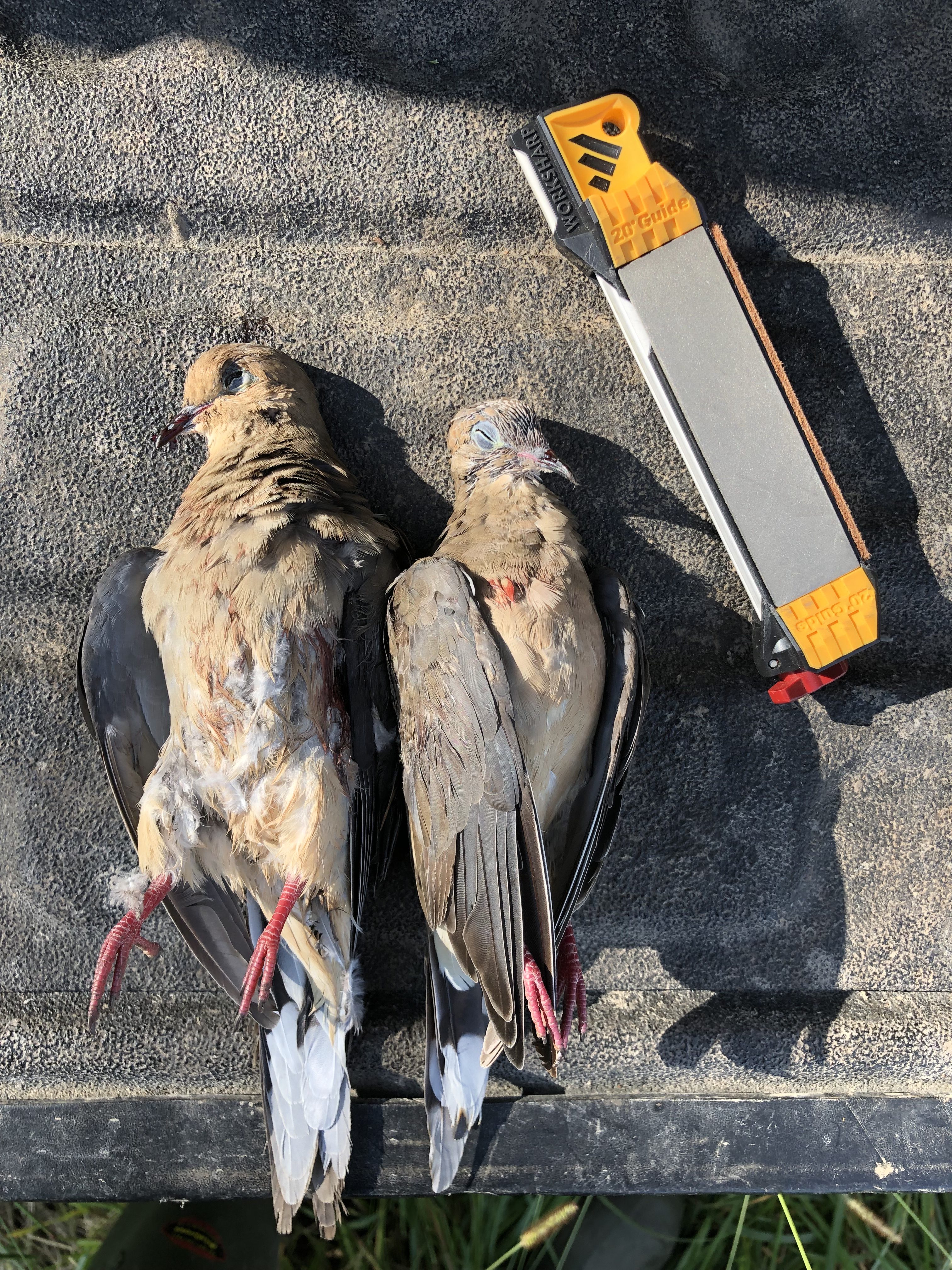
FIELD TIP: It’s important to maintain field cutlery; gamebird knives, game shears, and scissors sharp throughout the season. Work Sharp offers two sharpening tools that are easily carried in a bird vest or field bag. The Pocket Knife Sharpener is a packable knife sharpener, while the Guided Field Sharpener is a complete sharpening system which can sharpen a variety of cutlery and tools. Each sharpener’s compact design allows for easy field carry and use.
Written by Pro Staffer Edgar Castillo a.k.a Hunt Birdz (Check Out More Here)
-
Pocket Knife Sharpener
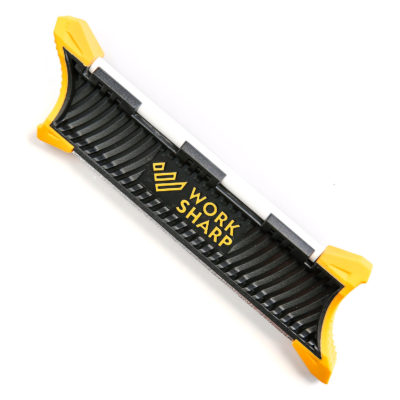 $14.95
$14.95 -
Guided Field Sharpener
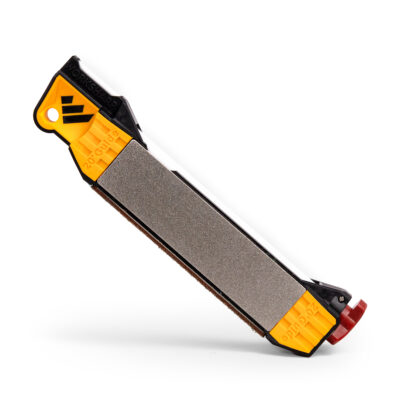 $39.95
$39.95






